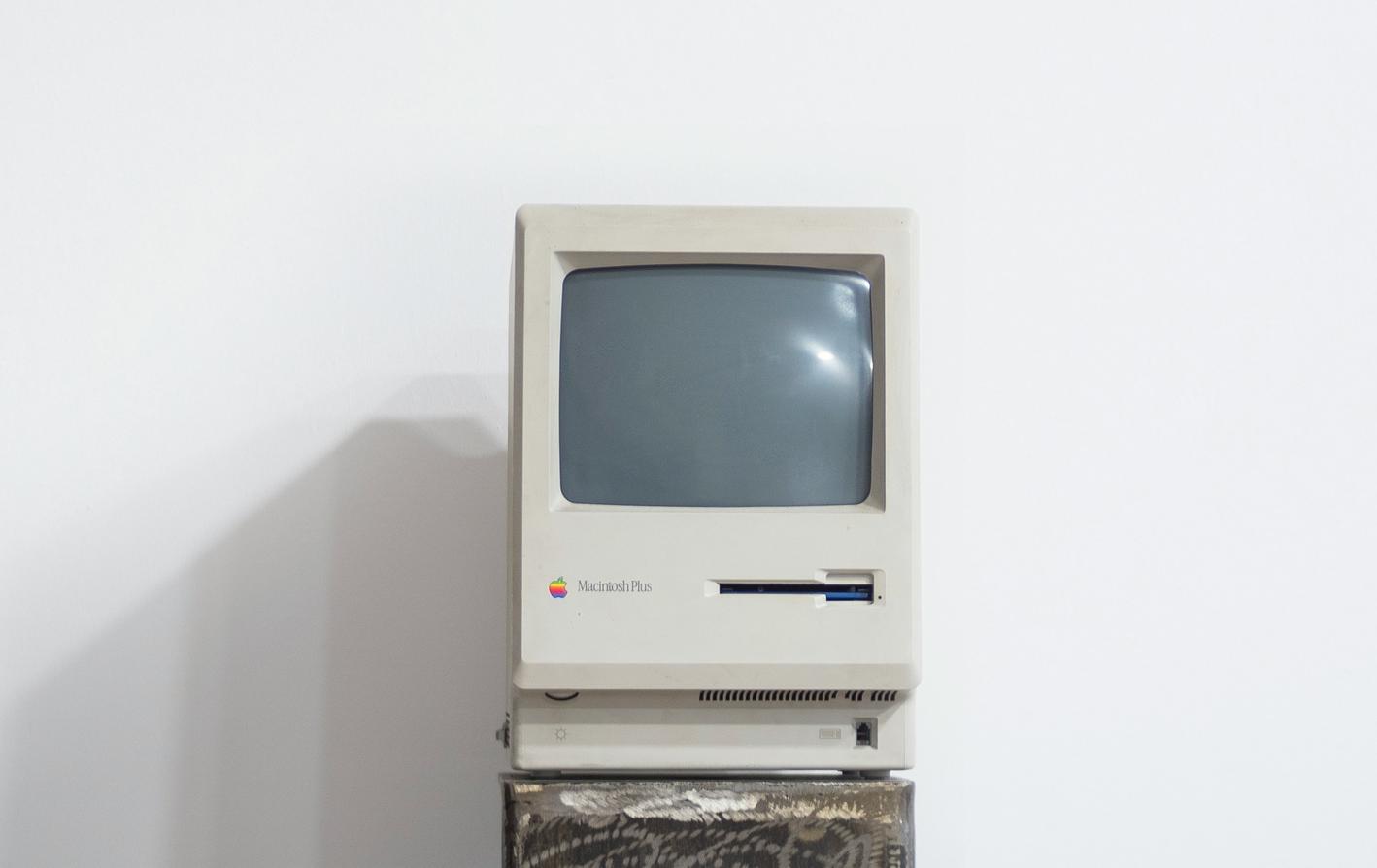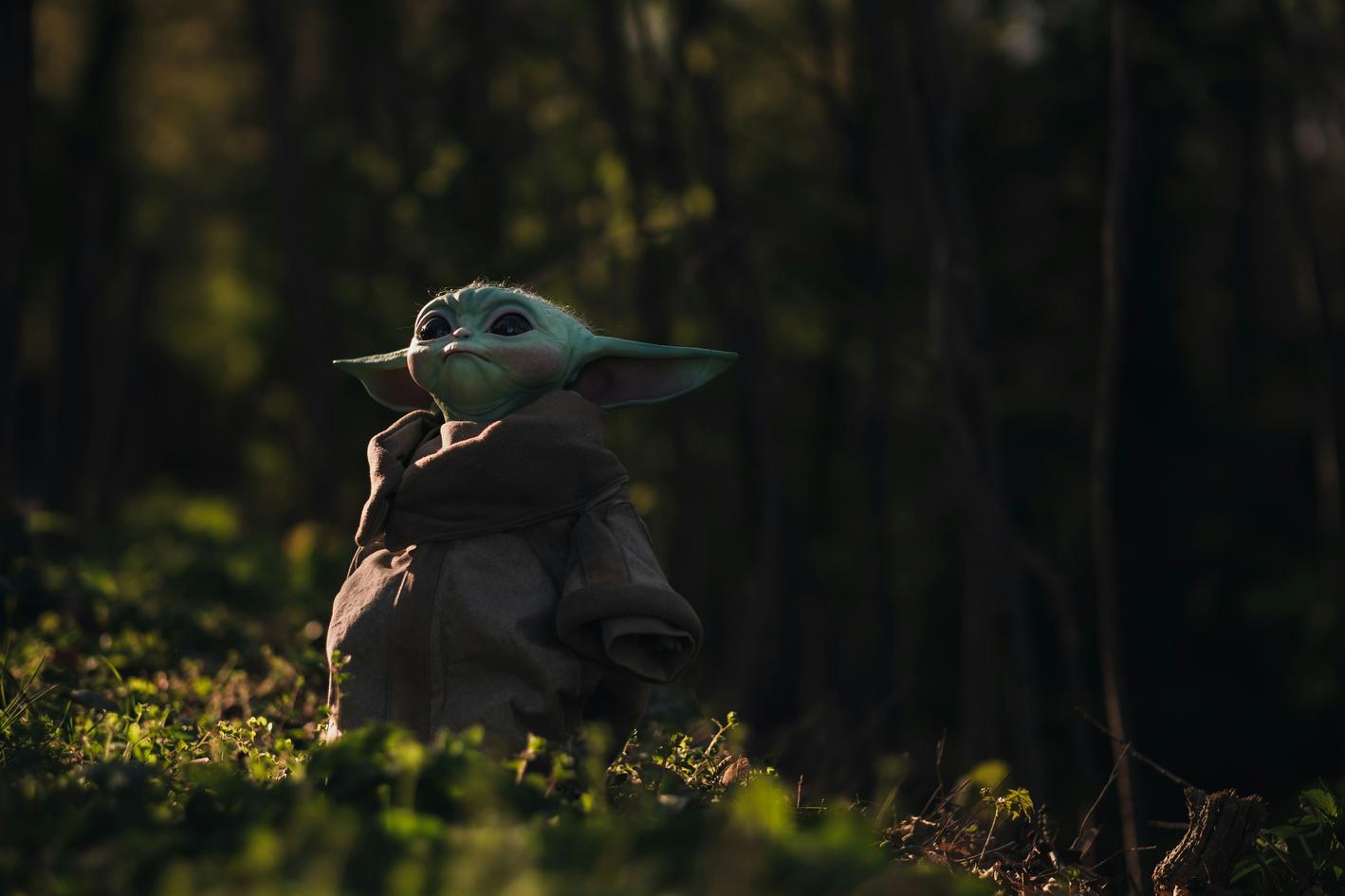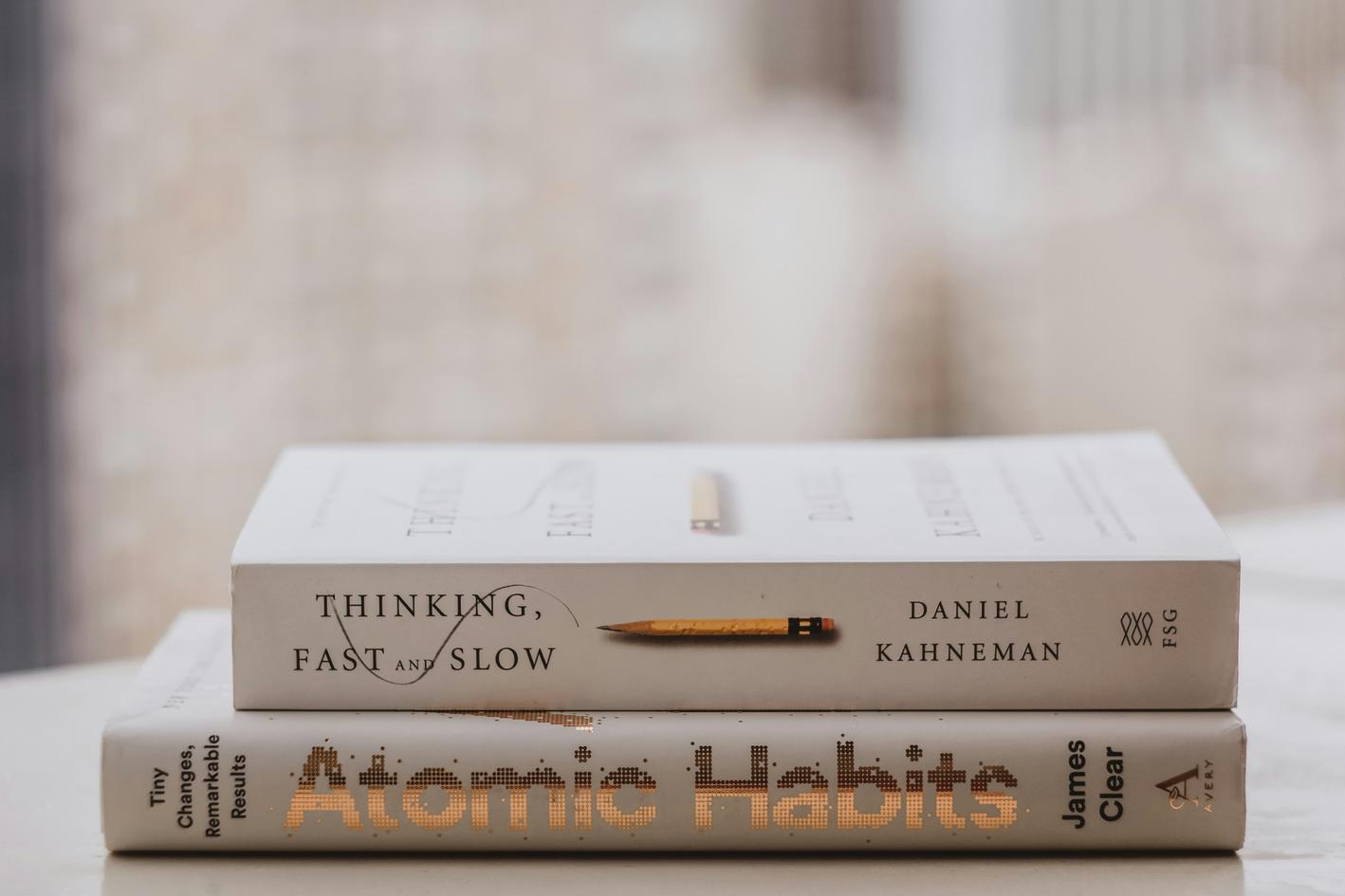
The world changed when Steve Jobs decided his new line of computers should be driven by a device called a mouse, rather than a keyboard. The idea for a graphical user interface had been around for over a decade before Apple figured out how to package it, but this one idea – this singular focus – changed the way people thought about computers.
You don’t have to own an Apple product to have benefited from their influence. Don’t worry, I’m not doing a whole episode about Apple, and we don’t have time to go into a nuanced discussion about its current incarnation. But what I want to talk about is something that Apple have specialised in over the last 40-odd years: big ideas that come in little packages.
Because while we might not come up with a paradigm-shifting piece of tech, both you and I are capable of putting a dent in the universe, and putting something on the permanent record of the Internet.
Like a bolt of lightning
In one of his Discworld novels, Terry Pratchett imagines inspiration as a particle. Weirdly enough, the writer of Eat Pray Love had a similar vision, although in her version, a particle of inspiration didn’t accidentally collide with a brick.
Some people have ideas all the time, while others never seem to be inspired by much of anything. If you’re listening to this by choice – rather than because your partner has the aux – it’s probably because you have ideas and, much like with kids, you’d like to know if there is anything you can do to get them to be quiet.. or better yet, make you money.
So that’s our plan for the next few minutes. Except of course, if you’re not the sort of person who has big ideas, but you’d like one. In that case, I have some wisdom from Richard St John, author of Stupid, Ugly, Unlucky and Rich.
How to have a good idea
Basically there are two steps to a good idea. Firstly, identify a problem. That’s the tricky thing about ideas – often they’re reactions to the world around us, so there’s no use sitting around and waiting for inspiration to strike. Notice those moments of friction, or when you think “if only…”, and see where that thought takes you.
If you can’t see a problem, look around you or listen to what others are telling you or other people. If you want to write a blog post on a topic you care about, find reviews of books in your niche and look for the comments that tell you what the book lacked. Plug those gaps with your own writing, and boom, you done had an idea.
The second step – and this is a pretty crucial one – write the bugger down. As David Allan observed in Getting Things Done, your brain is for having ideas, not for holding them. So get those ideas down on paper or in pixels as soon as you can.
So, we have our big idea hanging around our neck. How do we get the rest of the world to catch on?
Breaking big ideas down into manageable chunks

Star Wars was, by all measures, a pretty big idea. Originally conceived as a sprawling space opera, movie studios were reluctant to get on board following the commercial flop of his previous film, THX-1138.
What we now know as Episode 4 was originally just titled Star Wars, and a bunch of changes were made to the story to account for the likelihood of it not getting a sequel.
People with ideas are often given the “minimum viable product” talk. But a minimum viable Star Wars would’ve been shit. One of the reasons the film did so well is it had a rich mythology – stuff that was already in Lucas’ head years before a studio greenlit the script.
Rather than try and take the big idea and make it smaller, Lucas chose to start with one part of it, make it good, and see what happened.
When I was a kid, my parents introduced me to Jeff Wayne’s prog rock adaptation of HG Wells’ The War of the Worlds. It came out in 1978, and my parents had a copy of the vinyl. For Christmas one year they bought me the 20th anniversary double CD, and 20 years after that, Wayne released a new version as an audio drama with music – so the same tunes but without anyone suddenly bursting into song.
Jeff’s still out here pimping it, tweaking it, performing it in new venues and introducing it to new people. Just like Lucas, he found his one thing – his universe, his masterwork – and he spent decades turning the thing in his head into the thing we get to experience.
Of course they worked on other stuff in-between; they paid the bills with other projects or pursued other passions. Hamilton wasn’t conceived and developed in a linear process; it went through iterations and periods of pause before curtains went up for the first time.
A musical is a series of songs connected by prose. A film is a collection of scenes. A restaurant menu is a series of dishes, each a little plan to be executed.
Breaking your work down into its atomic parts doesn’t mean losing the majesty of the whole – instead, it’s a way to make the thing manageable, so you can accomplish it over time, making each element as good as it can be before moving on.
So if you’ve got a big vision that feels too daunting to pursue, break it down and turn each element into a task. Complete the tasks step-by-step, or mix-and-match between different categories of task if you get bored or frustrated. Like building a model out of Lego, the magic comes when the whole thing fits together.
Jay Papasan met Gary Keller at Gary’s real estate firm. Jay had worked in publishing before moving from New York to Austin Texas. Gary had a bunch of book ideas in his head, and together they collaborated on one of those ideas, a book called The One Thing.
It’s one of those businessesy self-helpy kinda books so I won’t bore you with it, but the gist is that you need one big idea and you need to focus, really focus, on making that thing work.
That focus comes from a big hairy question the book poses. It’s very dull, so let’s gear up by thinking about Wallace and Gromit.
One of the things we know about Wallace, apart from the fact he loves cheese and has a mouth wider than a canal, is that he builds intricate contraptions to help him with everyday tasks, like making breakfast or putting his trousers on.
These contraptions are often called Rube Goldberg devices, for it was he who popularised the idea of these absurd mechanical monstrosities.
This big question Keller and Papasan want you to consider is like that toy truck, knocking the first domino which then sets the whole thing in motion. The question goes like this:
What’s the one thing you can do, such that by doing it, everything else will be easier or unnecessary?
That’s quite a mouthful, but it really means finding that one pin that, once you strike it, wlil knock everything else down.
And I think this might be the hardest part of the whole creative process. I’ll take you briefly behind the scenes here for a moment – I was finding this section a bit tricky until – in a twist that might be too meta even for me – I hit upon the Rube Goldberg metaphor.
And not to make this too much about me, but I spent Thursday in a right old funk because I couldn’t find the one big idea for what I do with the time that isn’t spent making the thing you’re listening to right now.
I bring that up purely to acknowledge that this part of the process is actually and annoyingly really hard, but once you find it, everything else slots into place.
One of the best ways to get there is in dialogue. If you can call up a friend and have a chat over a coffee or via Zoom, they can ask questions that’ll unlock something in your head that makes knocking over that first domino super easy. In fairness, they might not even have to ask anything… sometimes just describing a problem out loud to another human is enough to help you unlock problem-solving abilities you never knew you had.
AI tools can help with this a little, although go sparingly, because studies are coming out that show if we stop using our critical thinking skills, we lose ‘em.
Build habits

Once you’ve got your big idea and you’ve broken it down into smaller bits, then identified the first domino that’ll make the next ones easier to knock over, the next thing is to build good habits so you’re consistently making time for your big idea.
We’re going to keep returning to the subject of habits, but the idea is they stack, just like the small tasks that make up our big work. If you’re making a commitment to “get healthy” (whatever that means for you), trying to do everything at once – reach a calorie deficit, get 10,000 steps in a day, lift weights, quit caffeine and swap the mojito for a mocktail – likely means you’ll bugger up the whole enterprise because, it turns out, you’re human, and buggering up is just part of the design.
So think about ways you can make time for your work, and check out episode 3 of this very podcast for a refresher on getting the hard part of your day done with, first thing.
One thing at a time
One of the ways in which we humans are fallible is we think we can multitask, when really what we’re doing is – much like the processor in your fancy digital telephone – focusing on one task for a short period, switching to the next, then the next, then back again.
CPUs are really good at that, but humans really suck at it. It can take us around 20 minutes to fully get back in the zone once we’re distracted… which is something that happens, on average, every 11 minutes.
The Pomodoro Technique from episode 4 can help us here, as long as you remember that the idea isn’t just to focus for 25 minutes, but to focus on one specific thing.
If you’ve laid out an hour every Thursday evening to crochet, crochet is what you should be doing. And don’t fall into the trap of thinking that, because you enjoy the process, that means it’s basically free time that can be subsumed by someone else’s priorities.
Protect your time for creative work as long as you can. No matter how busy and stretched you are, there’s always a way you can get a bit of time to work on your thing – you just have to ask yourself how important it is to you. And if, for example, not getting your creative time in makes you a crabbier parent, you don’t just owe it to yourself.
Willpower

Which brings me on to the subject of willpower. Just like steam power or wind power, willpower is a form of energy. And while they’re renewable, they’re not perpetual… something needs to go in, in order for something to come out.
Whether you’re working on a big artistic project or making a significant life change, you need to run on a full tank, otherwise those decisions that do require willpower will end up defaulting to the easiest, most familiar path.
Had a long-ass day and you forgot to put your meal-prepped dinner in the slow cooker that morning, [did somebody say “Just Eat”?], a child with a bike and three other jobs can be at your door with a full bag of bao buns in 30 minutes or your money bak.
The kinds of things that can sap your willpower are big decisions, suppressing emotions, and modifying our behaviour in pursuit of some sort of lofty goal… especially if that’s a long-term goal.
So make the right thing the easy thing. Just like we talked about with the Frog episode, a guitar sitting in a case under your bed is going to get played infinitely less than one that’s standing between the TV and the remote.
I am not out here advocating for tough choices and hard decisions… kinda the opposite really. Setup your life so the stuff you want future-you to accomplish is laid out for them.
Edit your life
Another way you can get traction on your one big idea is to ruthlessly cut out everything in your life that doesn’t match that vision.
OK, that’s a little extreme, so let’s back it off a tad.
A long-term goal for lots of creative-minded people is to get to do the thing they love, all the time, without too many unnecessary constraints or conflicts. Very few of us get to achieve that, but it’s something worth working towards.
So how can you “edit” your life so that there’s less friction around the stuff that doesn’t fit in with your goals?
I briefly mentioned meal prepping earlier. This isn’t necessarily about a particular diet, but it’s a way of batching a bunch of tasks so you’re not switching between them every day, or having to make a decision about what to cook… another thing that’s going to subtly deplete your willpower.
Similarly at work, if someone’s repeatedly asking you to do the same thing each week – like put some numbers into a PowerPoint presentation – what can you put in place that, bit by bit, eventually means they’re doing the thing themself, and maybe only coming back to you for approval?
If the boss’s assistant is asking you for these numbers on a regular basis, can you publish them automatically to the Intranet and share the Excel formula for building the bar chart?
Whenever I have an annoying job I think someone else should be doing, I clear the path and make it as easy for them to do, and then tell them that by doing it themselves, they’re not having to wait around for silly old me to get round to it. It works more often than it doesn’t.
Embrace the chaos

Among the other pieces of advice Keller and Papasan give in their book – some of which is a bit too hardcore businessy – is to embrace the chaos, and – at least in my reading – to give yourself a damn break.
If you put too much pressure on yourself or your project – your “one big idea” – to work, like it’s your last chopper out of ‘Nam, you’re probably going to push yourself into the red and into burnout.
When it comes to creative pursuits, the only person to whom you owe anything is you. You’re always doing the best you can with the resources you have. And those five words – with the resources you have – are critical for you to remember.
Moving towards something big will inevitably mean sacrifice. Of course. Something has to change – usually your level of comfort – in order for big things to shift. But those shifts won’t be sustainable if you put too much pressure on yourself for everything to be just right.
So when the dog demands too much of your attention or the washing line breaks and you have to fit a new one, or Janet from Accounts Receivable goes off sick and you have to show the temp how to use the invoicing software… when life happens, your big project will have to take a temporary back seat.
Just remember that it’s only a blip. And sure, if you’re George Lucas or Jeff Wayne, that blip might be 20 years long, but that big project’ll still be there when you’re ready.
What if…
But what if you haven’t found your one thing yet? Time’s ticking; you’ve got to get a move on! Mozart was a genius at, like, 5 or whatever, and all these influencers just keep getting younger and richer.
OK sure, but Vera Wang, Toni Morrison, Anthony Bourdain, James Dyson, even the Kentucky Fried Colonel didn’t hit public notoriety until they were in their 40s or beyond.
Just keep being curious, notice things, ask questions – especially dumb questions – and follow what interests you. You’ll find it eventually. Or you won’t, and you’ll just spend a lot of time being interested and curious… which is a pretty cool way to life a life, if you ask me, especially given that, in the whole vastness of the universe, our lives amount to one of those weird coffee half-burps that never quite emerge.
And if you do find your thing, how can you be sure it’s the thing? Y’know, the main one? Oh my word, I’ve lost count of how many times I’ve thought “this one’s the big one… it’s all been leading up to this”. And honestly, I don’t know if I agree all that much with Keller and Papasan. I think you can have many things, but if you look hard enough at the projects you’re flitting between, you’ll probably identify a pattern… and that’s the thing. Not the work itself, but the overarching theme.
So yeah, your next project might not be your magnum opus, but to paraphrase one of my favourite TV quotes, it might just be “the thing that gets you to the thing”.